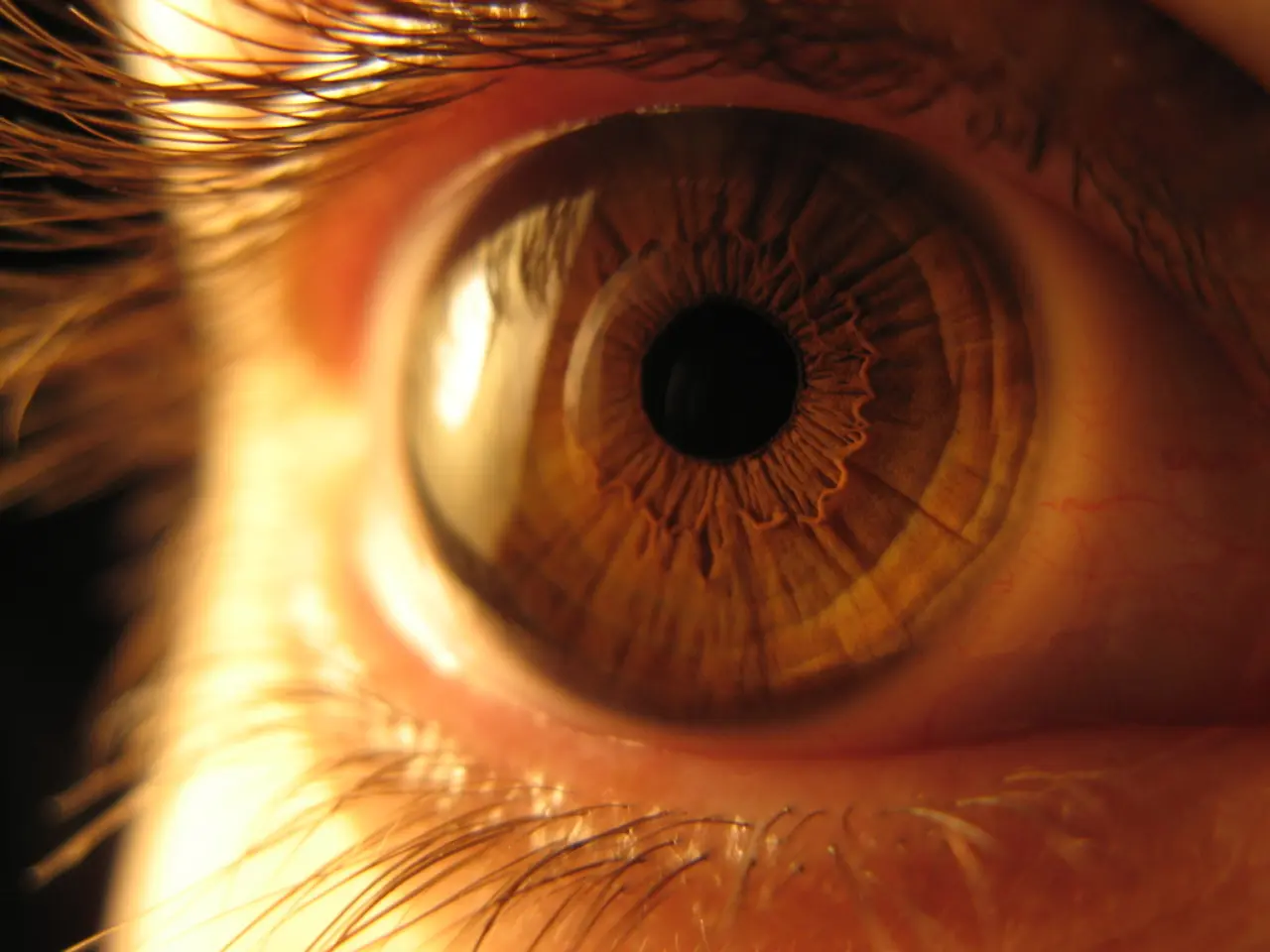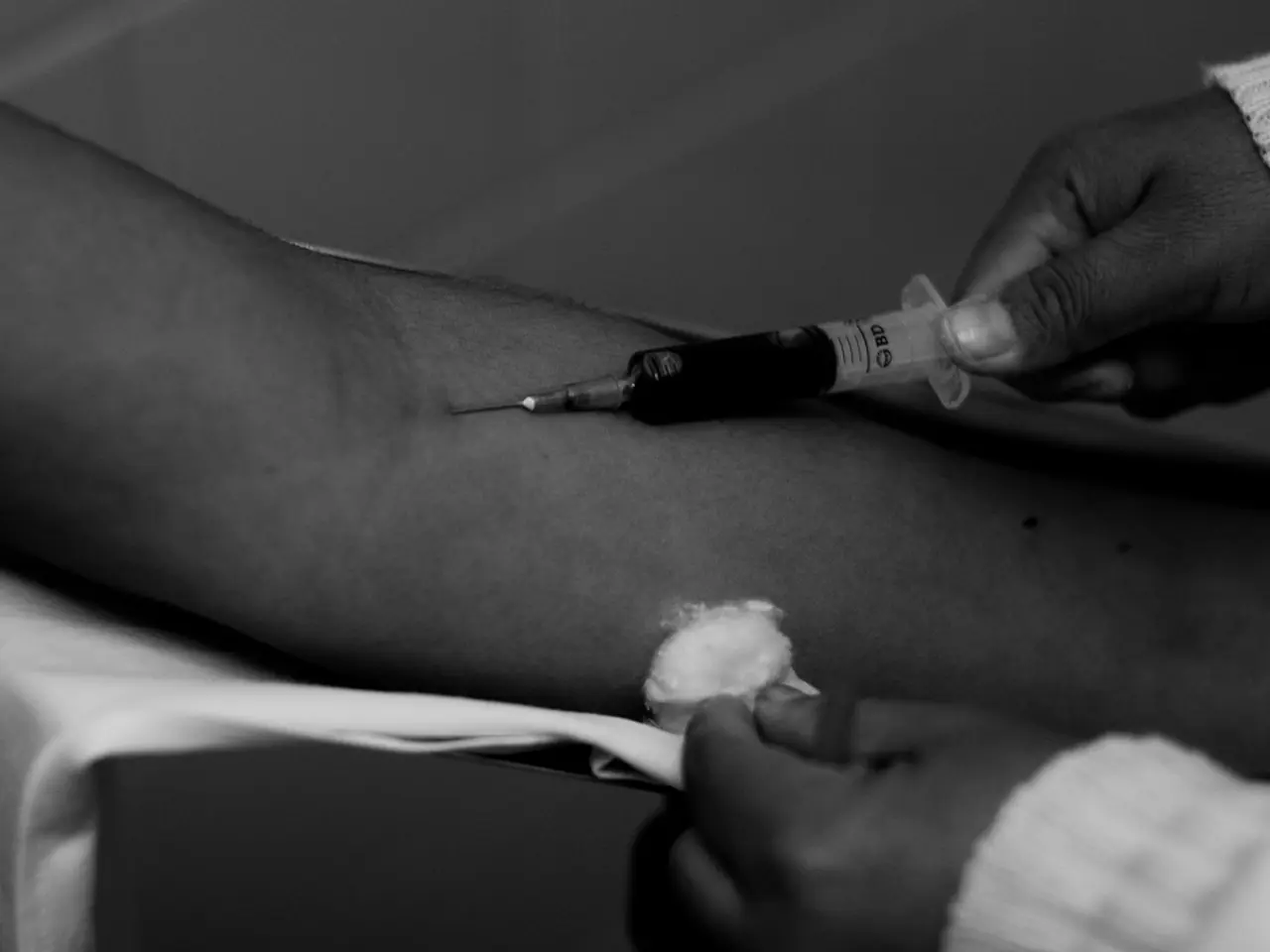Understanding the Efficiency of Under-Eye Bag Reduction through Tear Trough Fillers
In the quest for a more youthful appearance, many individuals are turning to tear trough fillers. This non-surgical treatment can help reduce the appearance of under-eye bags caused by lost facial volume due to aging.
The choice of filler depends on the individual's anatomy, goals, and the amount of volume lost. A gel-like substance made of hyaluronic acid is commonly used for this purpose. This substance is less invasive and less time-consuming compared to other procedures like fat injections or repositioning.
The procedure of injecting tear trough fillers takes about 5 to 10 minutes. The process involves a consultation and careful planning, followed by applying topical anesthetic to minimize discomfort. A precise injection, typically using a fine needle, deposits the hyaluronic acid-based filler under the eye to fill hollows and reduce under-eye bags.
Immediately after the procedure, the eyes may look full, and minor redness or swelling may occur. These side effects typically go away within the first 48 hours. During this period, it is recommended to avoid sleeping face down, touching the eyes, and using ice or a cold compress to help with swelling.
The filler results appear immediately after injection but take about 7-14 days to fully settle and integrate with the skin. Effects typically last between 8 to 12 months, after which maintenance treatments are needed to sustain the improvement. On average, you may need to get injections every one to two years.
While the risk of infection with tear trough fillers is low, it is not entirely absent. Infections could occur weeks to months later. To mitigate this risk, it's crucial to see a licensed dermatologist, plastic surgeon, or oculoplastic surgeon instead of going to a med spa for tear trough fillers.
Potential risks include common and temporary side effects like bruising and swelling, as well as more serious complications. Lumps or uneven texture can occur if the filler is not properly placed, but can be corrected or dissolved with hyaluronidase enzyme. Vascular occlusion, a rare but serious complication caused by inadvertent injection into the infraorbital artery, can lead to tissue damage and requires urgent treatment. A bluish or dusky skin discoloration near the injection site signals vascular occlusion and warrants immediate medical attention.
Given the sensitive nature of the under-eye area, the procedure must be performed by an experienced injector to minimize risks. For those interested in natural solutions, there are topical eye creams that contain caffeine to reduce swelling, cosmetics that can help with pigmentation, and the use of sunscreen and topical antioxidants like vitamins C and E to help reduce the risk of sun exposure and brighten the skin under the eyes.
In summary, tear trough filler injections are a quick, minimally invasive treatment lasting about 8-12 months with common mild side effects such as swelling and bruising, but carry rare serious risks like vascular occlusion, requiring expert administration and careful monitoring.
Controlling the aging process isn't just about skin-care routines; science and health-and-wellness fields also contribute significantly. For instance, health-conscious individuals can consider healthier options for their skin-care, like hyaluronic acid-based tear trough fillers, which pose less risk compared to fat injections or repositioning.




